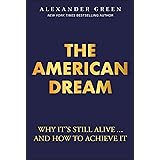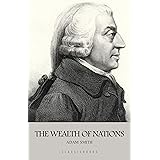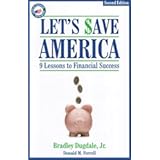In a world where financial landscapes often shift with unpredictable currents, the allure of precious metals as a steadfast store of value remains consistently strong. Many individuals look to diversify their financial holdings, seeking assets that can weather economic storms and offer long-term stability. Against this backdrop, the question of whether gold jewelry truly serves as a viable investment frequently arises.
The video above delves into the intricacies of gold jewelry as an investment, exploring its historical significance, inherent worth, and the myriad factors that influence its market value. Building upon those insights, this article provides a more comprehensive look at gold jewelry investment, offering practical considerations for those contemplating this unique blend of financial asset and wearable art.
Understanding Gold’s Enduring Appeal in Investment
Gold has cemented its place in human history as much more than just a beautiful adornment; it has long been recognized as a traditional store of value. Civilizations across millennia have coveted this precious metal for its intrinsic qualities, which extend beyond mere aesthetic pleasure. Its role as a reliable asset in times of economic uncertainty is well-documented.
Gold’s Role Through History
Throughout history, gold has served as currency, a symbol of wealth, and a tangible asset. Its journey from ancient Egypt to modern financial markets underscores its persistent appeal. This metal has consistently been a benchmark against which other forms of wealth are measured, enduring the rise and fall of empires and currencies alike.
Consequently, many investors view gold as a “safe haven” asset, flocking to it during periods of market volatility or geopolitical unrest. This historical precedent shapes its modern-day perception as a reliable component of a diversified investment portfolio. It acts like an anchor in turbulent waters, providing stability when other investments might falter.
Scarcity, Durability, and Malleability
The intrinsic qualities of gold are fundamental to its enduring value. Firstly, its scarcity ensures that it maintains a high demand-to-supply ratio; unlike paper currency, it cannot be printed at will. Secondly, its remarkable durability means gold does not corrode, tarnish, or decay, allowing it to retain its luster and form for centuries.
Furthermore, gold’s malleability and ductility allow it to be crafted into an astonishing array of forms, from intricate jewelry to thin coins and bars. This unique combination of properties makes it ideal for both functional and artistic applications, further contributing to its desirability and intrinsic worth. When you invest in gold jewelry, you are buying into these timeless physical attributes.
The Intrinsic Value of Gold Jewelry
Gold jewelry represents a fascinating intersection of tangible asset and artistic expression. Unlike other forms of gold, such as bullion or coins, jewelry embodies a harmonious blend of craftsmanship and inherent metal value. Understanding this dual nature is key to appreciating its investment potential.
Beyond Just Metal: Artistry and Design
While the weight and purity of gold are fundamental, the design and craftsmanship of a piece of jewelry often add another layer of value. A meticulously crafted necklace or a uniquely designed ring can command a premium beyond its melt value. This artistic component transforms a simple commodity into a piece of art, much like a rare painting holds value beyond the canvas and paint.
Subsequently, the reputation of the designer, the complexity of the design, and the quality of the finish can all enhance a piece’s overall worth. This “artistic premium” can sometimes significantly increase the value of gold jewelry, especially for antique or signed pieces. It allows the asset to be both a financial holding and a personal adornment.
Historical Performance of Gold Prices
Gold prices have always been dynamic, fluctuating based on a complex interplay of economic, geopolitical, and market factors. Insights from organizations like the World Gold Council highlight gold’s consistent role in portfolio diversification and wealth preservation. Historically, gold has performed particularly well in specific economic climates.
Gold as a Hedge Against Inflation and Devaluation
A significant aspect of gold’s appeal as an investment lies in its ability to act as a hedge against inflation. When the purchasing power of fiat currencies declines due to inflation, gold often retains or even increases its value. It serves as a financial safe harbor, protecting wealth from erosion over time. Therefore, many investors turn to gold during periods of rising inflation.
Moreover, gold can also provide a safeguard against currency devaluation. If a nation’s currency weakens, gold, being a globally accepted asset, tends to hold its value relative to other currencies. This stability makes it an attractive option for those concerned about economic instability. It acts as a counterweight, balancing out other assets in a portfolio.
Key Factors Influencing Gold Jewelry Value
When assessing the investment potential of gold jewelry, several critical factors come into play. These elements collectively determine the true worth of a piece, extending beyond simply its appearance. Understanding them is crucial for making an informed gold jewelry investment decision.
Purity Levels: Understanding Karats
The percentage of pure gold in a piece of jewelry, measured in karats (K), directly influences both its value and durability. Pure gold is 24K, meaning it contains 99.9% gold. While 24K gold is the most valuable due to its purity, it is also very soft and prone to scratching, making it less practical for everyday wear.
Consequently, gold is often alloyed with other metals like silver, copper, or zinc to increase its strength and create different colors. Common karats include 22K (91.7% gold), 18K (75% gold), 14K (58.3% gold), and 10K (41.7% gold). Higher karats generally indicate a higher intrinsic value, but a lower karat might offer better durability for practical use. Therefore, the choice depends on the buyer’s priorities.
Weight and Mass Considerations
The weight of gold jewelry is another primary determinant of its value. Measured in grams or troy ounces, a heavier piece contains more gold and thus commands a higher price. For investors, prioritizing pieces with substantial weight is often a strategy to maximize potential returns, as it directly correlates with the amount of precious metal. Just like buying gold bars, more weight generally means more value.
It’s important to distinguish between the total weight of a jewelry piece and its actual gold weight, especially if other materials like gemstones are present. The intrinsic value primarily stems from the gold content itself. A heavier piece offers a more direct investment in the metal itself, rather than the secondary factors.
The Craftsmanship Premium
As touched upon earlier, high-quality craftsmanship and intricate designs can significantly enhance a piece’s aesthetic appeal and, consequently, its market value. Beyond the raw material, the labor, skill, and artistry invested in creating the jewelry add a unique premium. This is where gold jewelry truly diverges from simple bullion.
This craftsmanship premium is particularly evident in antique, vintage, or designer pieces. These items are often valued for their unique history, artistic merit, or association with a renowned maker, elevating their worth beyond mere melt value. Consequently, a beautifully crafted piece can become a treasured heirloom, passing down both monetary and sentimental value through generations.
Advantages and Disadvantages of Investing in Gold Jewelry
Like any investment, gold jewelry comes with its own set of pros and cons. Weighing these carefully is crucial for determining if it aligns with your personal financial goals and risk tolerance. It’s not a one-size-fits-all solution, but a strategic choice for specific objectives.
Pros of Gold Jewelry as an Asset
Gold jewelry offers several compelling advantages as an investment. Its portability and compact size make it relatively easy to store and transport, unlike bulky real estate or large art pieces. This physical tangibility also provides a sense of security that digital assets cannot match, as you can literally hold your investment in your hand.
Furthermore, gold jewelry can diversify an investment portfolio, offering a hedge against economic uncertainties and market fluctuations in other asset classes. It combines financial value with undeniable aesthetic appeal, allowing an investor to enjoy their asset while it potentially appreciates. The dual nature of enjoyment and investment makes it unique, as it can also serve as a cherished family heirloom, carrying sentimental as well as monetary worth.
Cons to Consider Before Investing
Despite its advantages, there are potential challenges to consider when investing in gold jewelry. Selling gold jewelry can be more complex and sometimes less liquid than selling other forms of gold, such as coins or bars. Jewelers and pawn shops often pay less than the prevailing spot price of gold, accounting for their own markup and the cost of refining.
Moreover, the market price for gold jewelry is subject to fluctuations based on global supply and demand, economic indicators, and geopolitical events. There is no guarantee of appreciation, and the value can decline. Gold jewelry is also susceptible to wear and tear, scratches, and damage, which can affect its aesthetic appeal and, subsequently, its resale value. It requires care and maintenance to preserve its condition.
Gold Jewelry Versus Other Precious Metal Investments
When considering gold jewelry as an investment, it’s beneficial to compare it against other forms of precious metal investments. These alternatives, primarily gold and silver bullion or coins, serve different investor profiles and objectives. The best choice ultimately hinges on individual preferences and financial goals.
Bullion, Coins, and Jewelry: A Comparison
Gold and silver bullion (bars) and investment coins are primarily valued for their pure metal content. They are typically easier to liquidate at prices closer to the spot market value, as their value is almost entirely based on weight and purity. Consequently, they appeal to investors focused purely on commodity price movements and wealth preservation.
In contrast, gold jewelry offers a unique combination of investment potential and aesthetic appeal. While bullion and coins may have higher levels of purity, high-quality gold jewelry can still be a valuable asset. The craftsmanship, design, and any additional precious stones incorporated into the jewelry can significantly enhance its value, making it more than just its melt weight. It’s like comparing a raw ingredient to a gourmet meal; both have value, but one offers an experience beyond simple sustenance.
Distinguishing Between Gold and Silver Jewelry Investments
The choice between investing in gold or silver jewelry often comes down to market value, accessibility, and risk tolerance. Gold’s consistently higher market value makes it an appealing choice for those seeking both aesthetic enjoyment and a potentially higher return on investment. Its relative stability and historical performance often position it as a premium asset.
Silver jewelry, on the other hand, is generally more accessible and affordable, making it an excellent entry point for investors looking to diversify their portfolios without committing to gold’s higher cost. However, it’s important to note that silver’s market dynamics may be subject to greater volatility. Its industrial demand plays a larger role in its price fluctuations compared to gold. Therefore, while silver offers affordability, it may also come with increased price swings.
Making an Informed Gold Jewelry Investment Decision
Investing in gold jewelry can be a wise choice for individuals seeking a unique blend of financial security and aesthetic pleasure. Gold has historically preserved value, acted as a hedge against inflation, and serves as a tangible asset that combines fashion with potential long-term gains. It offers a stable asset in an often turbulent financial world.
Ultimately, the decision to invest in gold jewelry should be a thoughtful one, aligning with your broader financial strategy and personal preferences. Understanding the nuanced factors that contribute to its value—from karat purity and weight to exquisite design and historical significance—is paramount. By considering these elements, you can make a strategic choice that benefits your portfolio for years to come.











